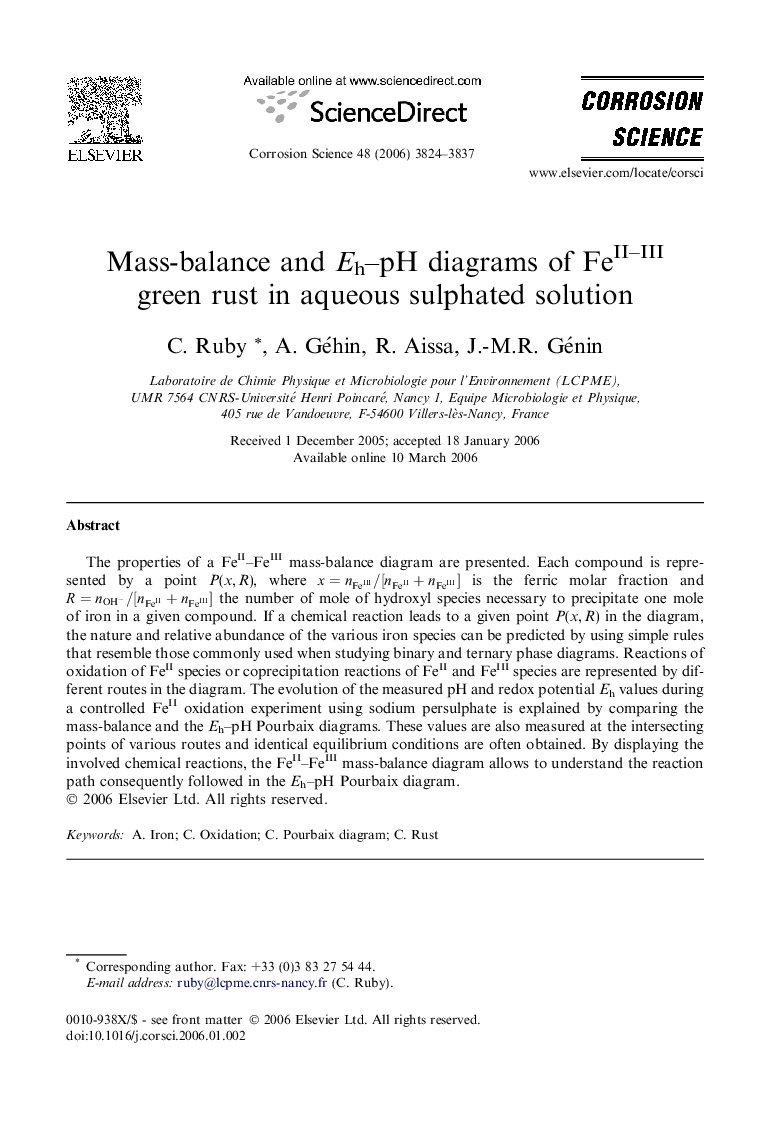| Article ID | Journal | Published Year | Pages | File Type |
|---|---|---|---|---|
| 1472323 | Corrosion Science | 2006 | 14 Pages |
The properties of a FeII–FeIII mass-balance diagram are presented. Each compound is represented by a point P(x, R ), where x=nFeIII/[nFeII+nFeIII]x=nFeIII/[nFeII+nFeIII] is the ferric molar fraction and R=nOH-/[nFeII+nFeIII]R=nOH-/[nFeII+nFeIII] the number of mole of hydroxyl species necessary to precipitate one mole of iron in a given compound. If a chemical reaction leads to a given point P(x, R) in the diagram, the nature and relative abundance of the various iron species can be predicted by using simple rules that resemble those commonly used when studying binary and ternary phase diagrams. Reactions of oxidation of FeII species or coprecipitation reactions of FeII and FeIII species are represented by different routes in the diagram. The evolution of the measured pH and redox potential Eh values during a controlled FeII oxidation experiment using sodium persulphate is explained by comparing the mass-balance and the Eh–pH Pourbaix diagrams. These values are also measured at the intersecting points of various routes and identical equilibrium conditions are often obtained. By displaying the involved chemical reactions, the FeII–FeIII mass-balance diagram allows to understand the reaction path consequently followed in the Eh–pH Pourbaix diagram.
